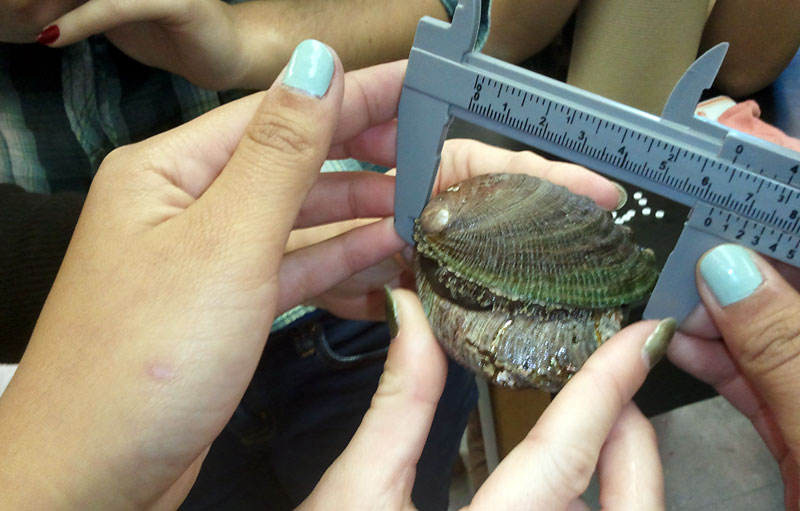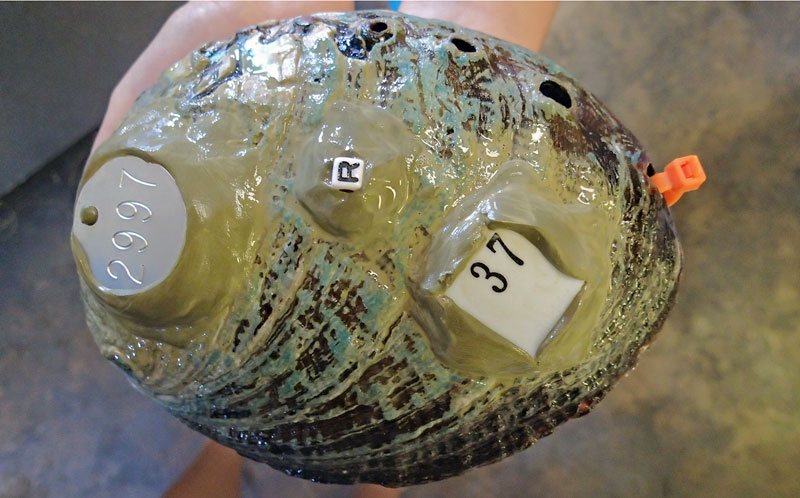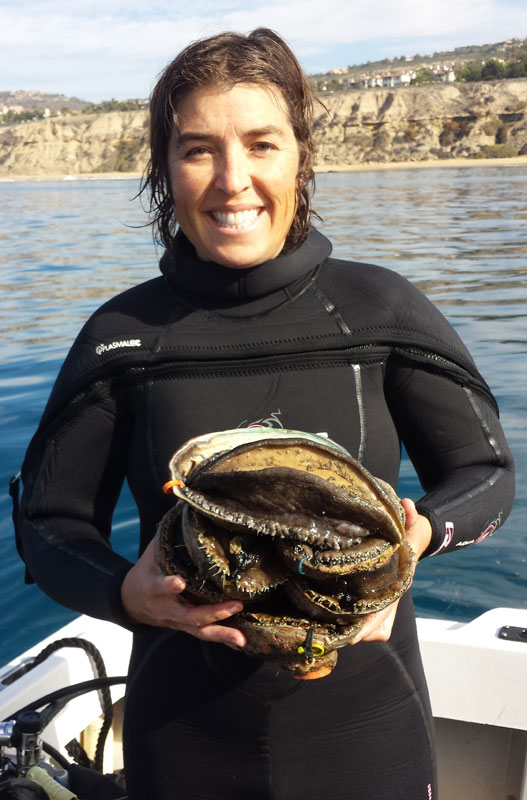Interest in abalone conservation work is stirring again. Get Inspired, a southern California non-profit organization, is the first to try to restore the tasty marine snail in southern California waters in more than a 15 years. That’s good for the one shelled mollusk that once teemed the shores in southern California.
Abalone were once part of a multimillion dollar fishery in Southern California and a huge part of southern California culture. Their sweet meat was once cheaper than a bologna sandwich, and now commands up to $80 per pound. Likened to New England lobster and Maryland blue crab, this regional food could be found at most community celebrations until the 1970’s. Their impact on our culture can be seen in the architecture of homes in beach cities where abalone shells are imbedded in the walls of homes, mantles, and backyard fences. Laguna Beach was one of the areas most populated with abalone and was famous for abalone diving.
Since the 1850’s, all 7 California species of abalone have been serially harvested and now we are left with depleted populations, including 2 endangered species and 2 species of Concern (Threatened species). It is currently illegal to commercially harvest them.
Get Inspired’s Executive Director and marine biologist Nancy Caruso has spent the last 13 years restoring and conserving the kelp forests of Newport and Laguna Beach. With the help of 7,000 children (who grew it in the classrooms) and 4,000 volunteers (who helped plant it and educate communities), they have restored this precious ecosystem only found in a few places around the world.
Known as the “Rainforests of the Sea”, more than 800 animal species rely on kelp. KelpFest, an annual Laguna Beach celebration started by Get Inspired, celebrates the magnificent kelp forests that were gone for nearly 25 years, and now offer food and shelter to the 800 species along our coast, including abalone. Get Inspired continues to survey the kelp forests twice per year inside and outside the marine protected areas, and has a mission to help restore the animals that once lived in them.
They have a program called “Seabass in the Classroom”, in partnership with Hubbs SeaWorld Research Institute, with students growing and releasing white seabass into the ocean for restocking. They also started “Abalone Nurseries” in schools for kids to learn the story of the abalone and raise them in school for release. Over 3500 students have raised these two animal species for release in the ocean. Get Inspired’s mission is to Inspire passion and purpose through the discovery of arts and sciences. We have been focused on our Orange County Ocean Restoration Project since our inception with a goal to create a healthy thriving kelp forest ecosystem along our coast through community involvement and ownership.
In 2013, Get Inspired was issued the first abalone restocking permit granted by the Department of Fish and Wildlife in almost two decades. Their pilot project was to test the survivability and to track BIG abalone (greater than 6”). The premise was that everything in the ocean eats small abalone and that all previous efforts to restore them involved small abalone. “Ouplanting the large abalone has two advantages,” said Caruso, “one is that they are capable of producing lots more babies and two they are eaten by very few predators at that size.” The project was successful reporting nearly 40% survival after 1 full year.
As divers we know how hard it probably is to track an abalone. “We were diving every 48 hours when they were first outplanted, “ Caruso explained, “we did not want to lose track of them.” Get Inspired is now fundraising for a BIG project that build on the pilot project’s success. Their plan is to spawn 100,000 wild abalone and then raise them in the public aquariums and student classrooms all over Orange County and LA County until they reach 5 years old and then start outplanting them each year for 5 years to see what age is ideal for outplanting where survival is the highest and the lowest cost. “We are going to need lots of volunteer divers for this project,” proclaimed Caruso who has trained over 100 divers to help with her various underwater projects. Get Inspired is currently fundraising to begin the project that will span the next 10 years.
For more information or to make a donation contact Nancy Caruso at nancy@getinspiredinc.org or visit www.GetInspiredinc.org.



